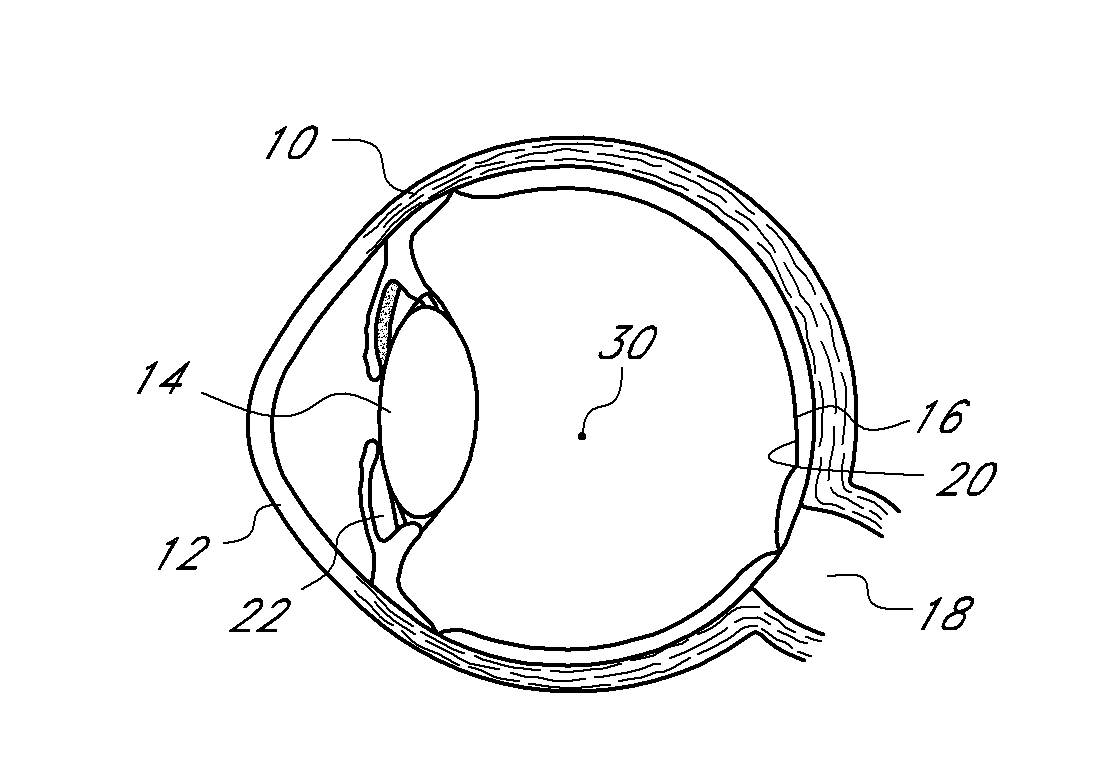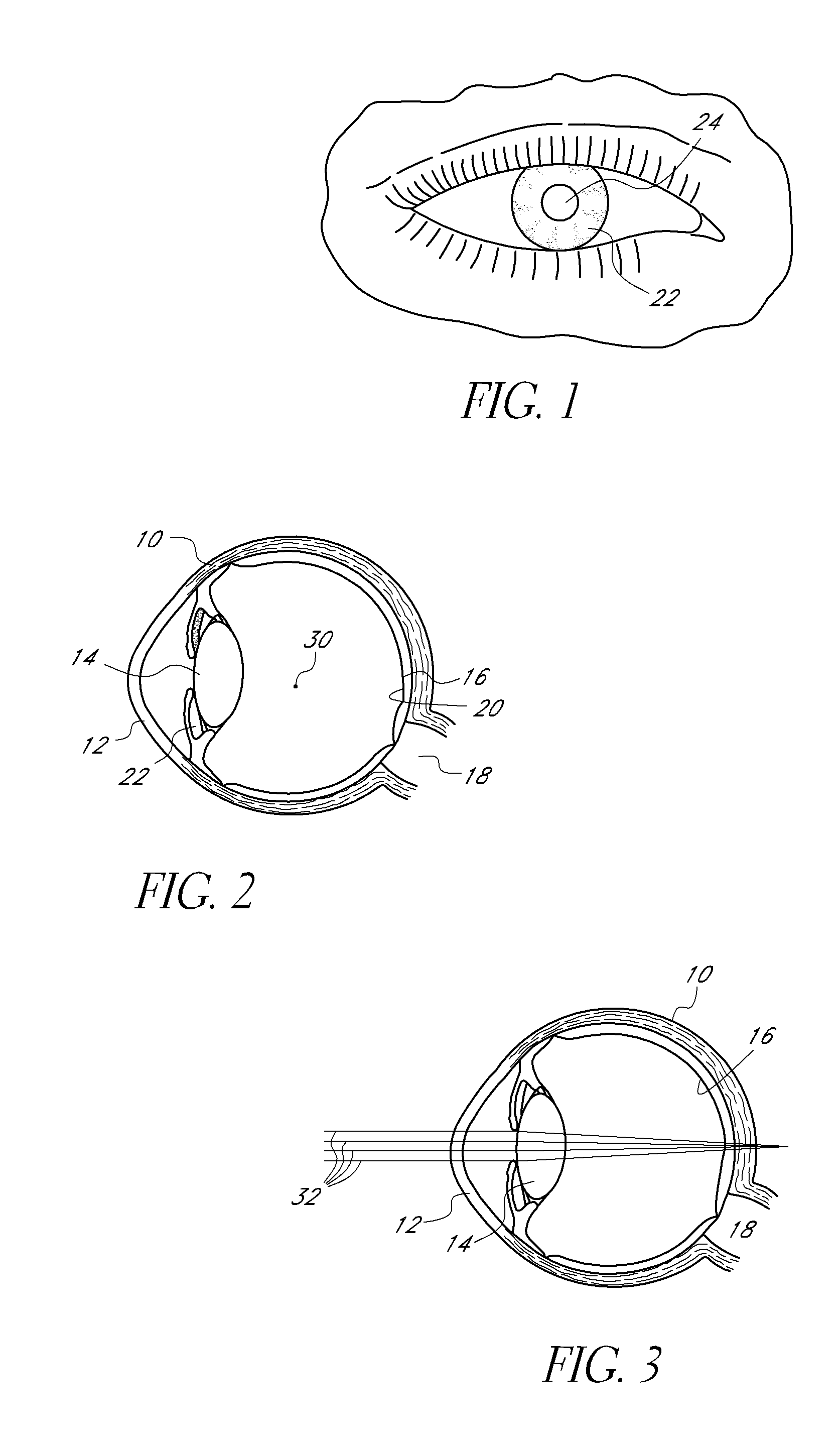Ocular mask having selective spectral transmission
a spectral transmission and ocular mask technology, applied in the field of ocular masks, can solve the problems of uncompensated cylindrical refractive errors, corneal astigmatism, and individuals cannot see up close without vision correction, and achieve the effect of increasing the depth of focus of patients
- Summary
- Abstract
- Description
- Claims
- Application Information
AI Technical Summary
Benefits of technology
Problems solved by technology
Method used
Image
Examples
example 1
Synthesis of the Dimethacrylate of 1,4,-bis(4-ethylanilino)anthraquinone
[0289]The dimethacrylate of 1,4,-Bis(4-ethylanilino)anthraquinone: synthetic mixture consisted of
Intermediate5.2%Intermediateingredients{Leucoquinizarin23.3%2-(4-Aminophenyl)Ethanol76.7%EthyleneGlycolexcess(todissolve)AcetoneexcessDeionizedWaterexcess0.625MNaOHexcess}DryAcetonitrile78.9%Triethanolamine10.4%MethacryloylChloride5.5%EthyleneGlycolexcess(todissolve)
[0290]The dimethacrylate of 1,4,-bis(4-ethylanilino)anthraquinone (or 2-[4-({4-[(4-{2-[(2-methylprop-2-enoyl)oxy]ethyl}phenyl)amino]-9,10-dioxo-9,10-dihydro-anthracen-1-yl}amino)phenyl]ethyl-2-methyl prop-2-enoate) was synthesized in the following manner. 10 grams of leucoquinizarin and 33 grams of aminophenyl ethanol were stirred under a nitrogen blanket in an oil bath for five hours at 150° C. The chemical mixture was then cooled to 100° C. at which point dry ethylene glycol was added to dissolve the solid and the nitrogen blanket was removed. Air was t...
example 2
Synthesis of NIR Transparent Mask Material
[0300]The NIR transparent mask material formulation consisted of:
Butyl Acrylate51.60%Ethylmethacrylate45.07%Benzotriazole UV Absorber0.50%Ethyleneglycoldimethacrylate0.50%Azobisisobutyronitrile0.13%Disperse Red 1 Acrylate0.20%Dimethacrylate of 1,4,-Bis(4-ethylanilino)2.00%anthraquinone
[0301]The following synthesis procedure is directed toward a particular material. However, one skilled in the art may readily adapt this procedure for use with other monomers, UV absorbers, dyes, and the like. The NIR transparent mask material was synthesized in the following manner. For clarity's sake, the percentages referred to herein relate to the weight percent of the total material weight. First the following dye solutions were created: disperse red 1 acrylate (2-[N-ethyl-4-[(4-nitrophenyl)diazenyl]anilino]ethyl prop-2-enoate) in butyl acrylate and dimethacrylate of 1,4,-bis(4-ethylanilino)anthraquinone (2-[4-({4-[(4-{2-[(2-methylprop-2-enoyl)oxy]ethyl}ph...
PUM
 Login to View More
Login to View More Abstract
Description
Claims
Application Information
 Login to View More
Login to View More - R&D
- Intellectual Property
- Life Sciences
- Materials
- Tech Scout
- Unparalleled Data Quality
- Higher Quality Content
- 60% Fewer Hallucinations
Browse by: Latest US Patents, China's latest patents, Technical Efficacy Thesaurus, Application Domain, Technology Topic, Popular Technical Reports.
© 2025 PatSnap. All rights reserved.Legal|Privacy policy|Modern Slavery Act Transparency Statement|Sitemap|About US| Contact US: help@patsnap.com



